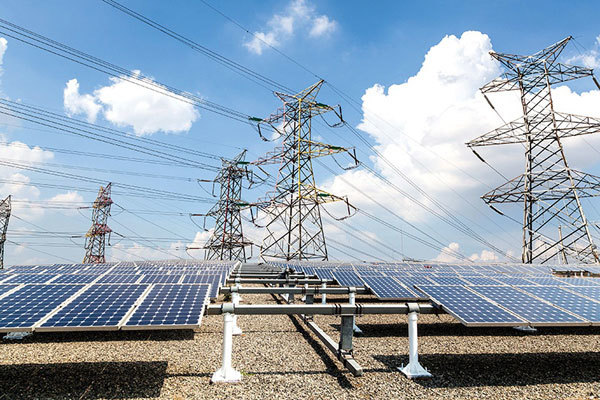 |
| Finance and capacity lead energy transition dilemma. |
With a total power capacity of about 156,000MW by 2030, Vietnam is interested in a more suitable energy structure that aims for fewer fossil sources and more renewable energy, while also meeting the requirements of socioeconomic development.
The latest draft of the Power Development Plan VIII (PDP8) considers reducing coal power. The November draft proposes that the capacity will be reduced from about 180,000MW to 156,000MW by 2030 and from 369,500MW to 333,500MW by 2045.
Most likely, the government will not include solar power in the total balance of the national electricity system due to the unstable characteristics of the current development, as there are insufficient storage solutions for this energy model. Nevertheless, it seems likely that the government will continue encouraging the development of solar power to meet the requirements of self-production and self-consumption.
Meanwhile, the PDP8’s capacity target for offshore wind by 2030 is still under consideration by the government. Compared to the March scenario, offshore wind increases by 1,000MW to 4,000MW, while onshore wind power climbs by 1,258MW to 17,338MW. The drafters expect this will lead to a reduction in power investment costs due to contracts on a larger scale, meaning that by 2030 these adjustments could help reduce the required investment capital by around $34 billion.
Mathias Hollander, senior manager of the Global Wind Energy Council, believed that with the existing wind potential, Vietnam can develop 10GW of offshore wind power by 2030, while generating about $60 billion added value for the economy. “Offshore wind power development will protect Vietnam against the risks of fuel fluctuations when coal power is cut and solar power remains limited because of lacking storage,” Hollander said.
Investors are closely following the transformation of the energy sector in Vietnam. Sean Huang, development manager of Copenhagen Offshore Partners – that is involved in the offshore wind power project in La Gan – said that the high capacity of offshore wind power can compete with thermal power plants when reaching the highest load capacity.
However, the lack of a regulatory framework could make offshore wind less competitive. “Vietnam has yet to resolve several barriers in terms of financial access, licensing mechanisms, power purchase agreements, and the power grid. Many investors are confused with these procedures,” Huang said.
There are many issues left that the government is required to solve amid the energy transition. Among them, a high proportion of wind and solar power would push up system costs while the transmission infrastructure and backup sources are not ready.
The Ministry of Planning and Investment’s data showed that investments in energy projects are still high and capacity factor is low, leading to high electricity production costs. Wind power costs about $2 million/MW and solar and hydropower go up to $1.3 million/MW, though the latter’s capacity can reach 40-45 per cent, while the two former capacities only reach up to 30 per cent.
Vietnam has many coal power plants, but it is at least among the 23 countries that have committed to gradually abandoning coal power, and not building or investing in new power plants.
The draft PDP8 reserves 40.7GW for coal-fired power sources, nearly 15GW lower than the adjusted PDP7. But looking at the current power generation structure, Vietnam cannot eliminate coal power overnight, as it still plays an important role, at least until after 2025.
However, economic problems also make it difficult for Vietnam to fulfil commitments. The life cycle of a coal-fired power plant is 10-20 years. When switching to new energy sources, it is necessary to calculate the depreciation rate and settle contracts with investors and employees in coal mining.
To implement the net-zero scenario, Ha Dang Son, director of the Centre for Energy Research and Green Growth under the Vietnam Union of Science and Technology Associations, estimates that each year Vietnam needs $19 billion to balance electricity prices with economic targets and about $1 billion to invest in the power sector. “The transition process should be concerned with the availability of energy sources, accessibility to sources in different regions, the affordability for people, and the acceptance of different types of energy at the local level,” Son said.
“Each country has its own way to abandon coal power, but Vietnam can learn from Japan to promote green transition in a practical way. The fifth Strategic Energy Plan approved by the Japanese cabinet in 2018 offers a vision of that country’s energy future based on safety, energy security, environmental standards, and economic efficiency,” Son added.
A multi-layered, diversified, and flexible electricity supply and demand structure, with renewable and nuclear energy, is poised to bring the answers to Japan’s energy problem by 2030. The plan also reaffirms the importance of technological self-reliance to ensure that Japan retains core technologies in the energy supply chain in the domestic market.
Through the reform of the electricity structure, the Ministry of Economy, Trade, and Industry in Japan also encourages the diversity of the parties involved in the country’s electricity market as well as the interaction between them. The entry of new suppliers not only increases energy investment but also promotes economical and efficient use of electricity and technological innovations.
Currently, Japan is at the forefront of the energy transition in Asia, with the Asia Energy Transformation initiative pledging to support $10 billion for ASEAN countries to achieve carbon neutrality. Vietnam and Japan will soon discuss a specific roadmap to support Vietnam’s energy transition, as was agreed on during a meeting last month between Minister of Industry and Trade Nguyen Hong Dien and his Japanese counterpart, Koichi Haguida.
Source: VIR

Setting the course for emissions cuts
While the necessary course for a greener and more sustainable future in global energy policies seems set, Vietnam’s energy transition faces budgetary and capacity challenges, both of which need to be overcome with suitable solutions.